As rising high school juniors and seniors begin to do their college research, their friends and family talk about getting into an Ivy League school, or according to Forbes, maybe even some of the “New Ivies.” People may talk to their parents and hear about how they got into some of these schools with much lower test scores. They might also hear how their parents only applied to two or three schools, and got into them all with relative ease.
For a lot of students, seeing the current expectations laid out by colleges can be incredibly daunting. Between the stress of studying for standardized testing, writing the seemingly infinite number of essays colleges ask for, and trying to stay on top of senior year academics, students can start to feel incredibly unsure about their future.
According to a study from The Princeton Review, 73% of high school students feel above average levels of stress having to do with the college application process. But when did it become like this? What has happened over time that has raised the standards for college applications to be so high, and the acceptance rates to be so low?
To start, colleges are receiving more applications than before. According to the Common Application, first year applications are up 6% from the 2023-24 to 2024-25 application cycle, with a total of 8.5 million applications coming from 1.4 million applicants. The Common App states that from the 2023-24 to 2024-25 application cycle, there was a 1% increase in applicants. While that may not seem like a lot, that trend has continued to be on the rise for many years.
Take the most applied to university in the United States, the University of California, Los Angeles, for example. According to UCLA’s website, in 2015, just ten years ago, they received a total of 93 thousand applications. In 2024, they received a total of 146 thousand applications. Yet, despite the number of applications, the number of students that UCLA is accepting has stayed the same, leading to a decrease in acceptance rates. According to data from Ivy Coach, UCLA’s acceptance rate went down by 9% from 2015 to 2023. With top colleges not opening up more spots for students, their acceptance rates will continue to go down.
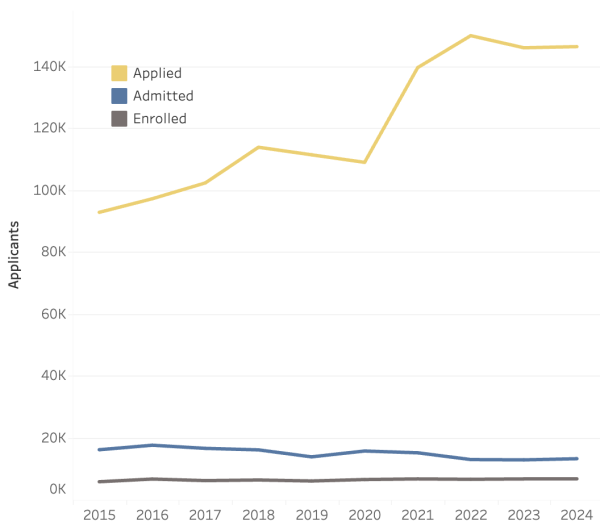
Another reason the college admissions scene has become so competitive is the culture surrounding standardized testing. Elite universities require high standardized test scores, and they seem to be getting higher as time goes on. As an example, look at Duke University. According to Duke’s website, their median SAT score is between 1520-1570 (out of a 1600 point scale). According to College Tuition Compare, back in the 2015-16 application cycle, the median SAT score was around 1460.
One of the many reasons for this increase is the implementation of test optional policies. According to Sara Harberson, as these policies rose into place (both with the pandemic limiting the ability to test and the general rise in popularity of these policies), fewer students are reporting their scores unless they are in the top percentile. When only high test scores are being submitted, the data gets skewed, and the average becomes inflated, raising the standards for what is needed to get in.
Seeing students boast online about their scores, claiming that they achieved them with ease, perpetuates the stress around testing. As these standards continue to get higher, parents and students increasingly feel the need to invest in tutoring for standardized testing to ensure that their scores are as high as possible. Even if families cannot afford paid tutoring, free resources like Khan Academy and practice tests created by the College Board (although limited) have risen in popularity as well.
Finally, some schools have just done a complete overhaul of their marketing strategies to make their schools seem more selective. Northeastern receives an incredible number of applicants per year. According to Northeastern’s website, with the 2023-24 application cycle they received 98 thousand applications. Their acceptance rate was at 5%. According to Ivy Coach, back in 2015 their acceptance rate was roughly 32%. According to the Huntington News, in 2001 the acceptance rate was around 70%.
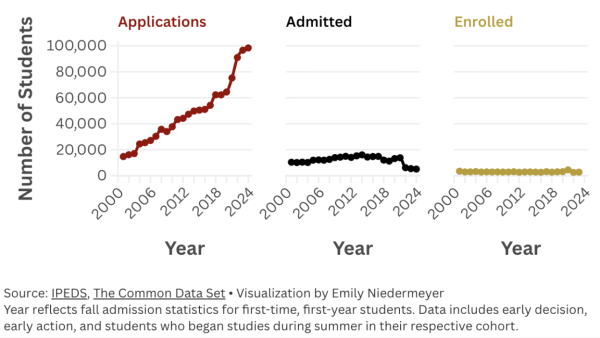
This change only happened, though, because Northeastern’s presidents felt the need to rebrand to make their school seem more competitive. According to Boston Magazine, previous Northeastern president Richard Freeland had a strong desire to get into the top 100 schools in the U.S. News & World Report “Best Colleges” rankings. According to Freeland, it was a “life-or-death matter.” In order to do this, they used some strategies to adjust how their statistics appeared to people.
Northeastern’s acceptance rate is calculated based on how many students they accept into their Boston campus for the fall semester. As of 2014, U.S. News did not require data from spring admissions to calculate their acceptance rates, which would allow Northeastern to manipulate their apparent selectivity.
For some Northeastern students, they spend their first semester in their N.U. in-program, which allows them to study abroad for the first semester, and then return to campus after that. According to Boston Magazine, According to Boston Magazine, students who receive this option have “lower grades and SAT scores” than most of the other admitted students. Since they are not on Northeastern’s campus, they are not counted in with the acceptance stats for the rest of the incoming fall class.
These actions result in students feeling that the school is harder to get into, and that it is uber-selective (which ultimately, it is). When people see these low stats, it can make the school seem better (as in many people’s minds, selectivity is equivalent to how good a school is).
Overall, the pressure to be the best is everywhere, and when resources like the Common App have made it so accessible to apply to a multitude of schools at once, the urge to apply to as many as possible is always there.
After reading this article, you may be wondering—how do I ensure that I can get into all of the schools that I want to? And honestly, there’s no way to ensure that and there never really has been. Standards are high, and the pressure is higher. The only thing to do is to submit your applications, and hope for the best. If you truly have given it your all, know that you have done the best that you can, and that you have put your best foot forward. Good luck!
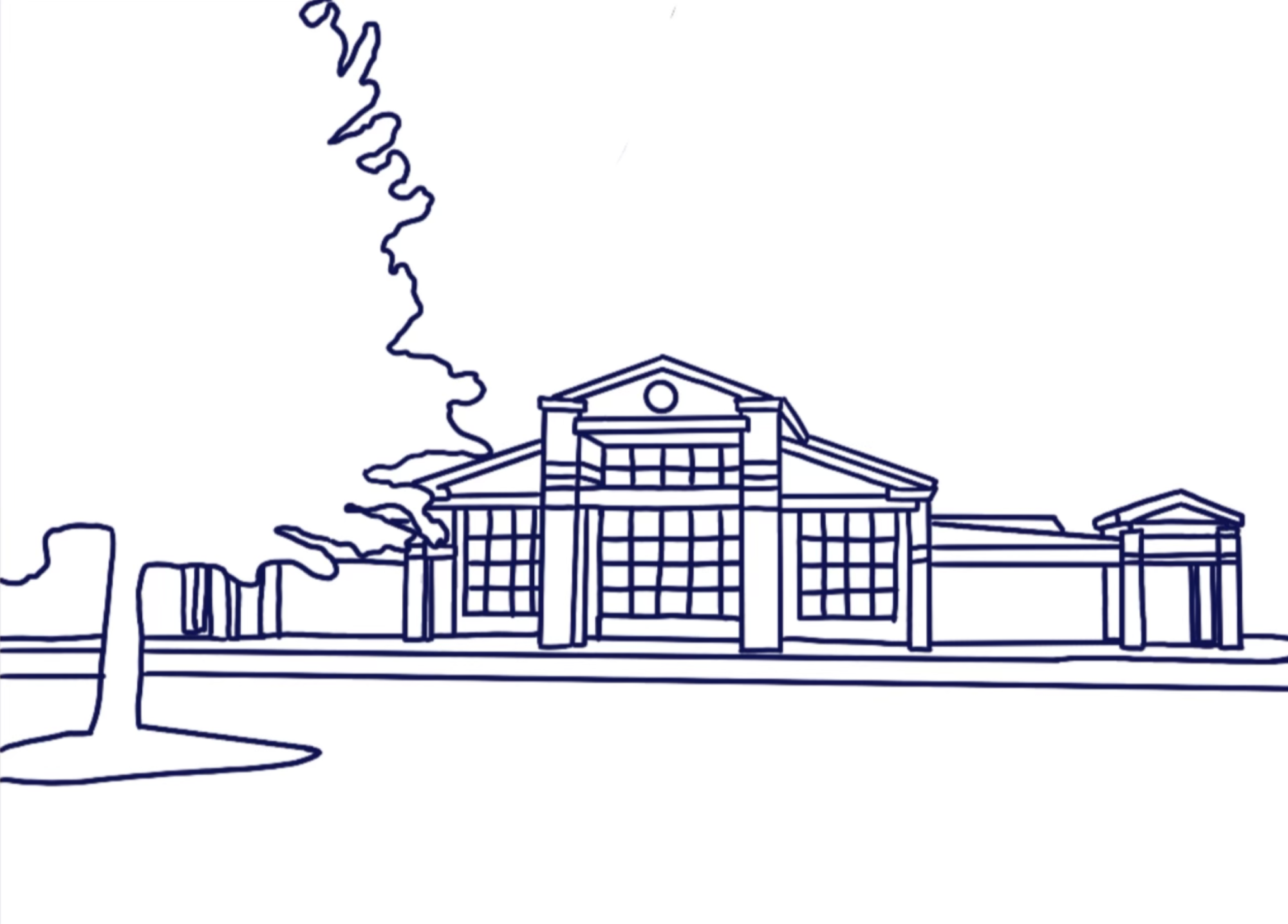
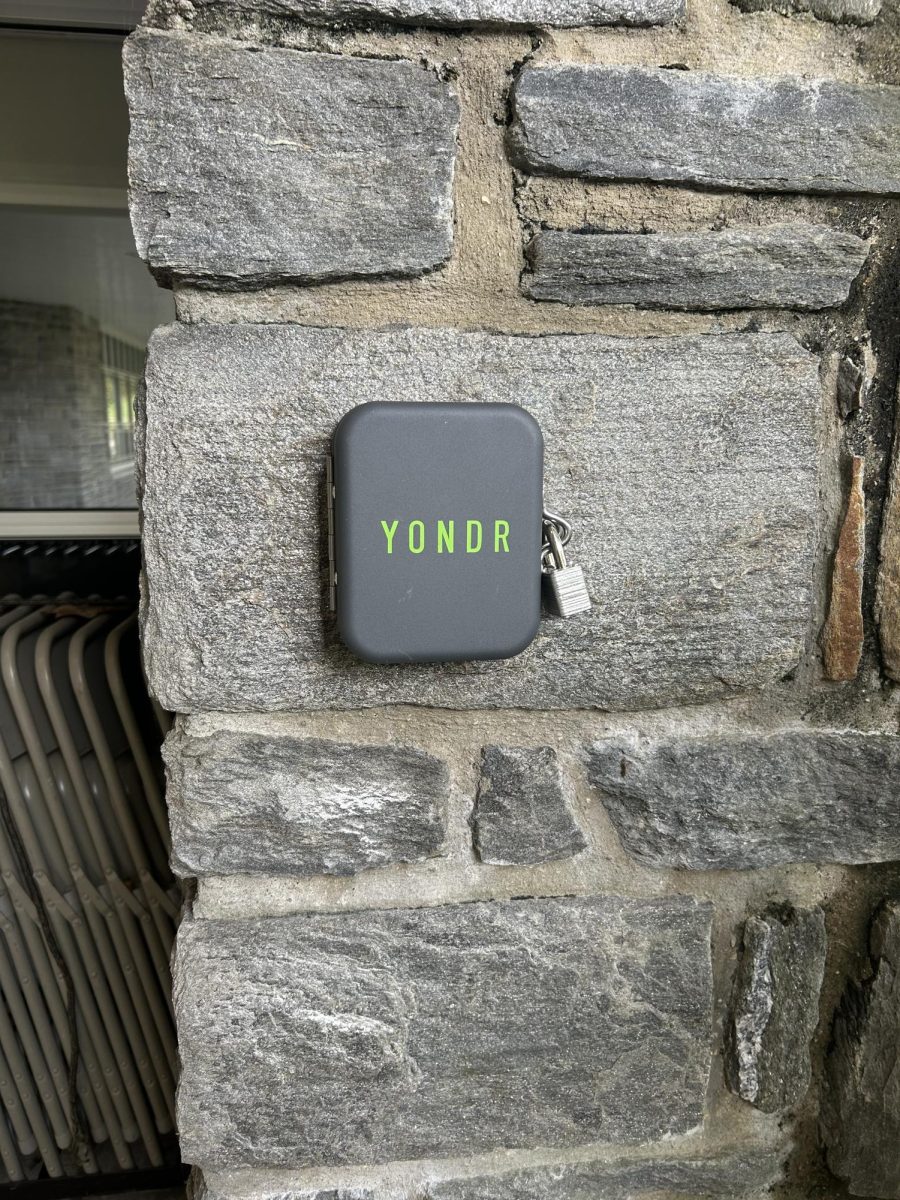




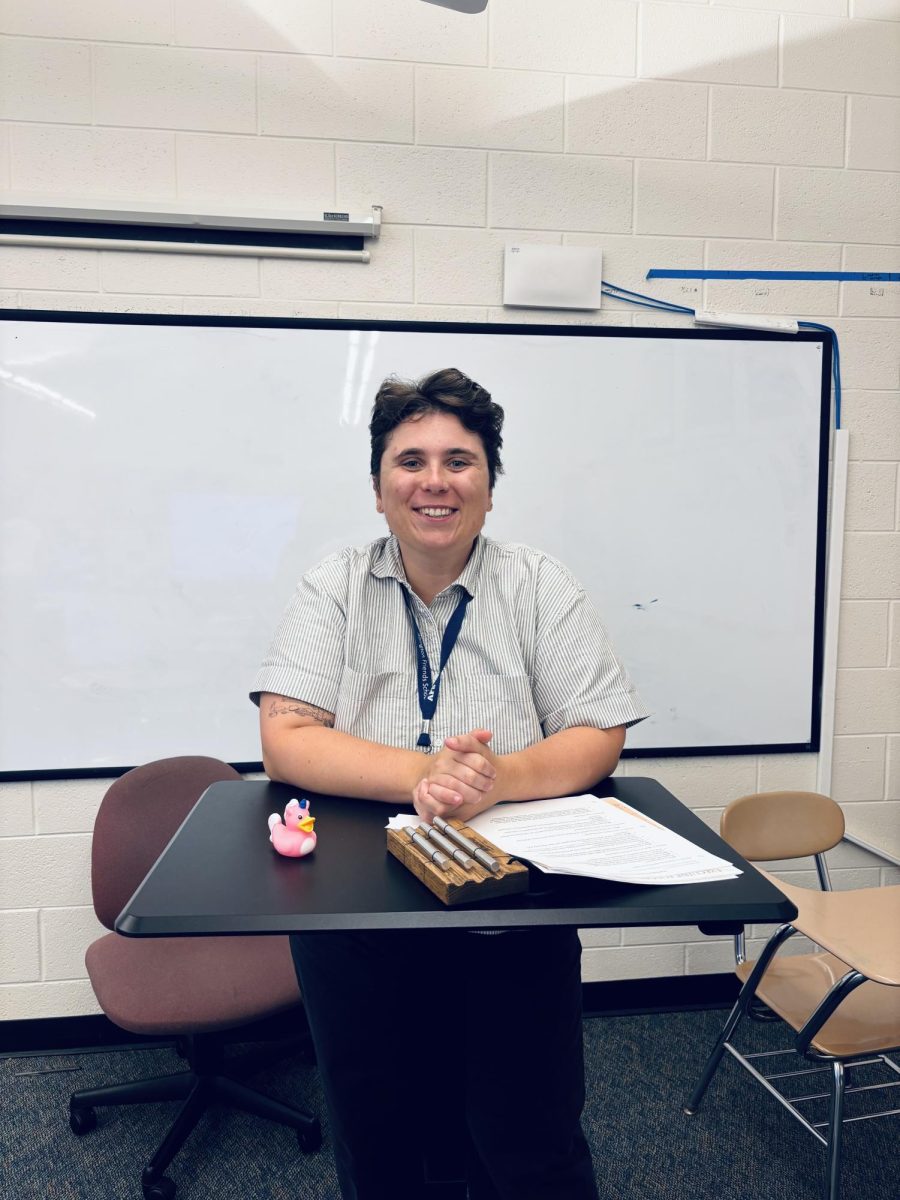
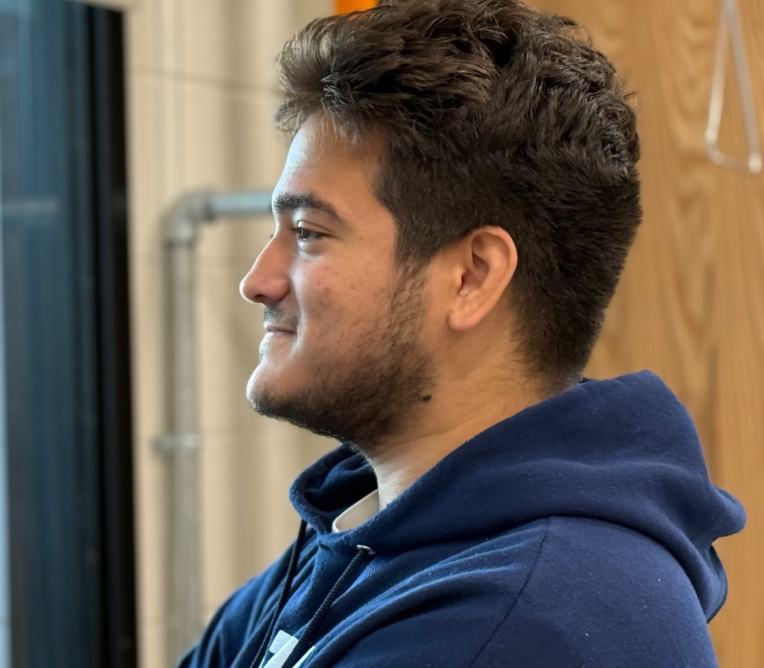





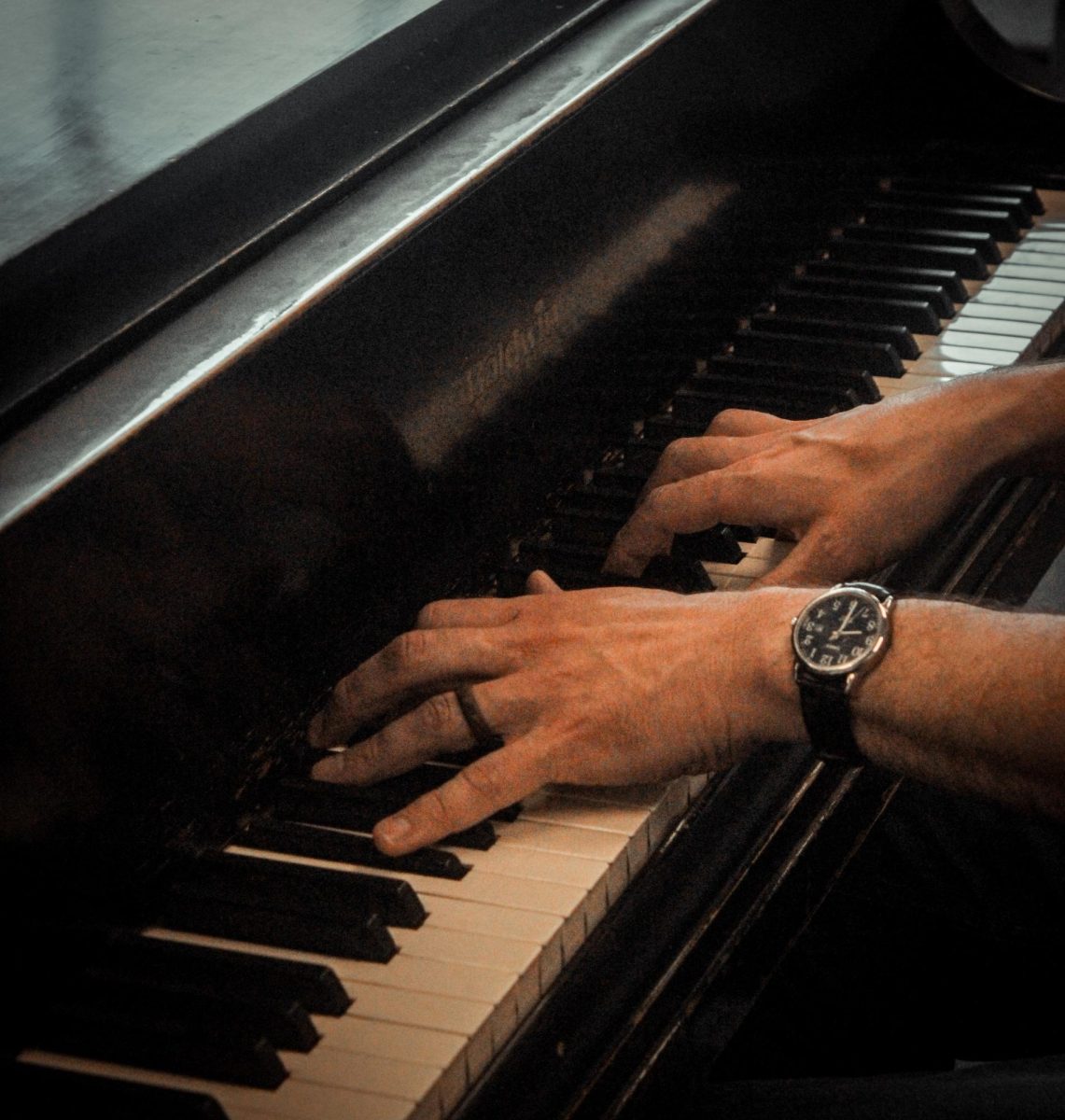
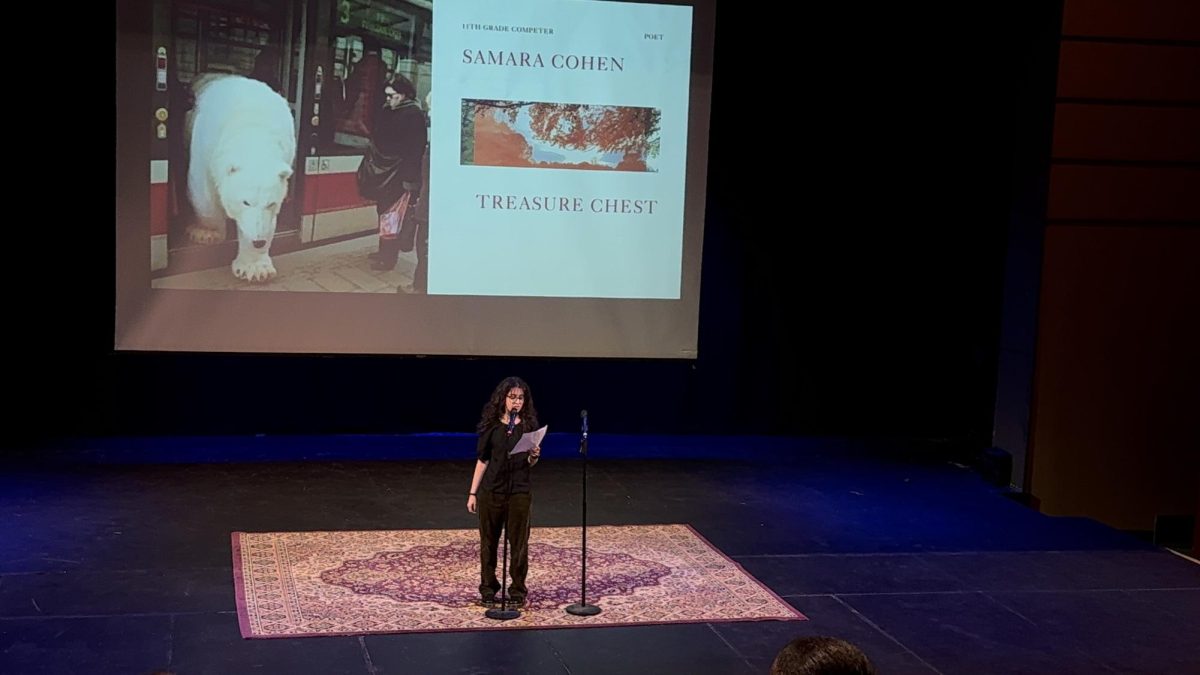
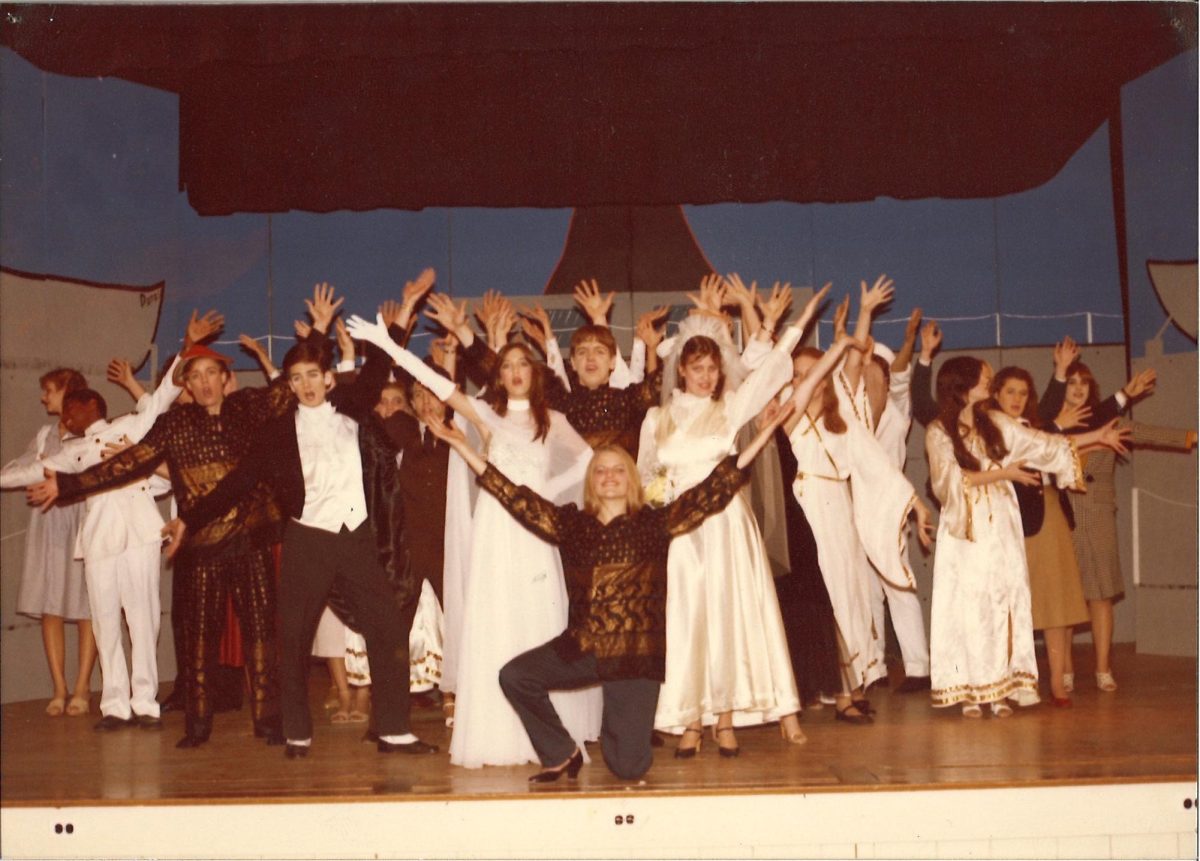

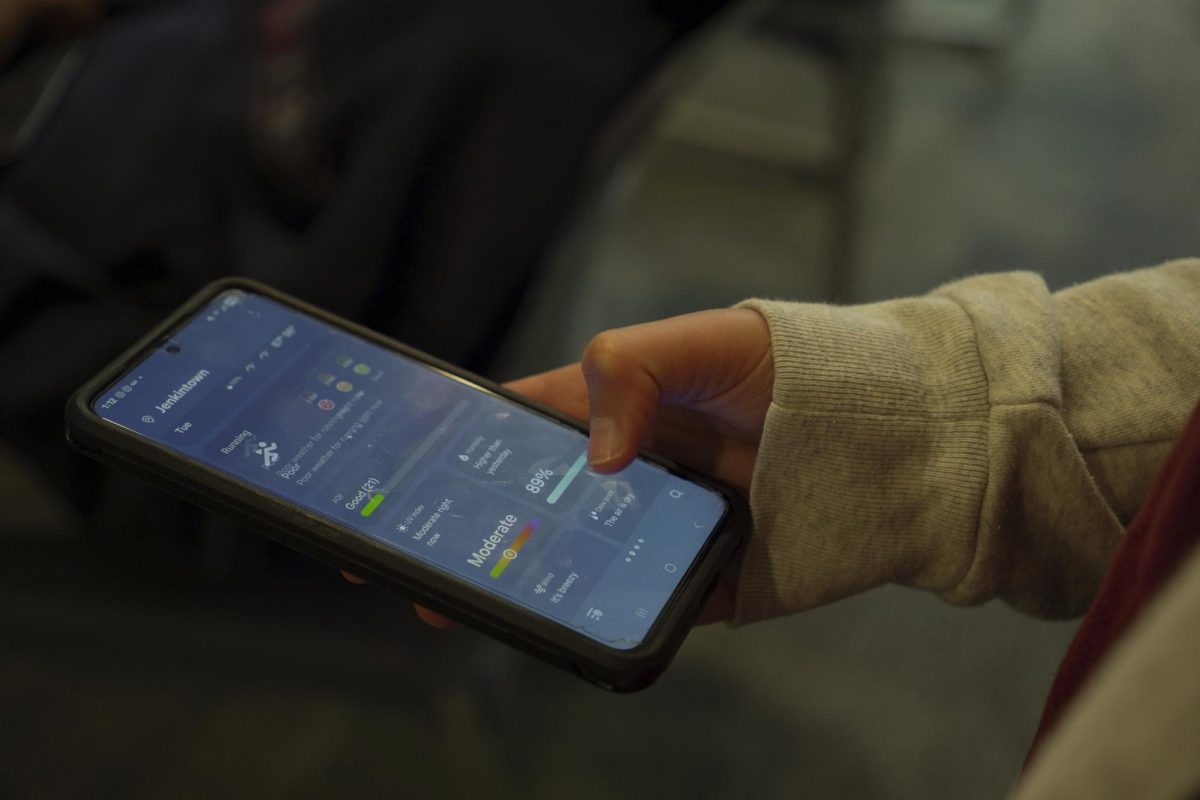
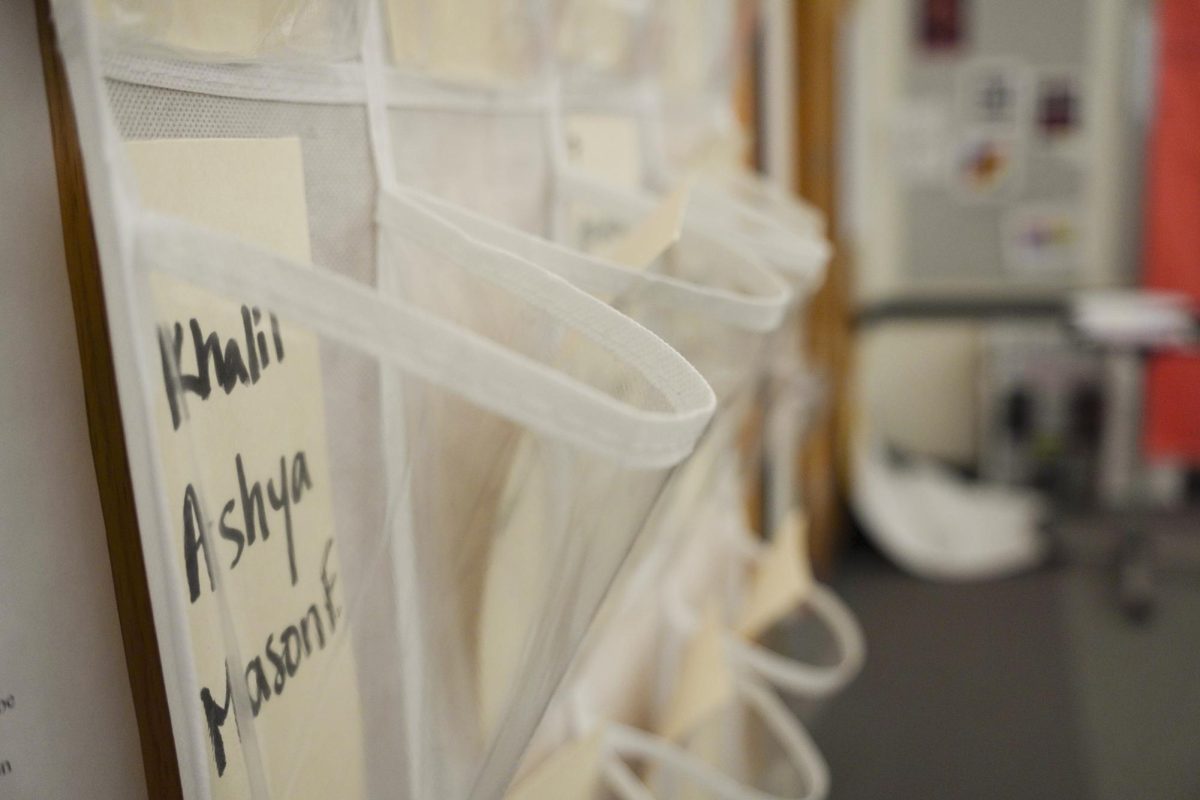

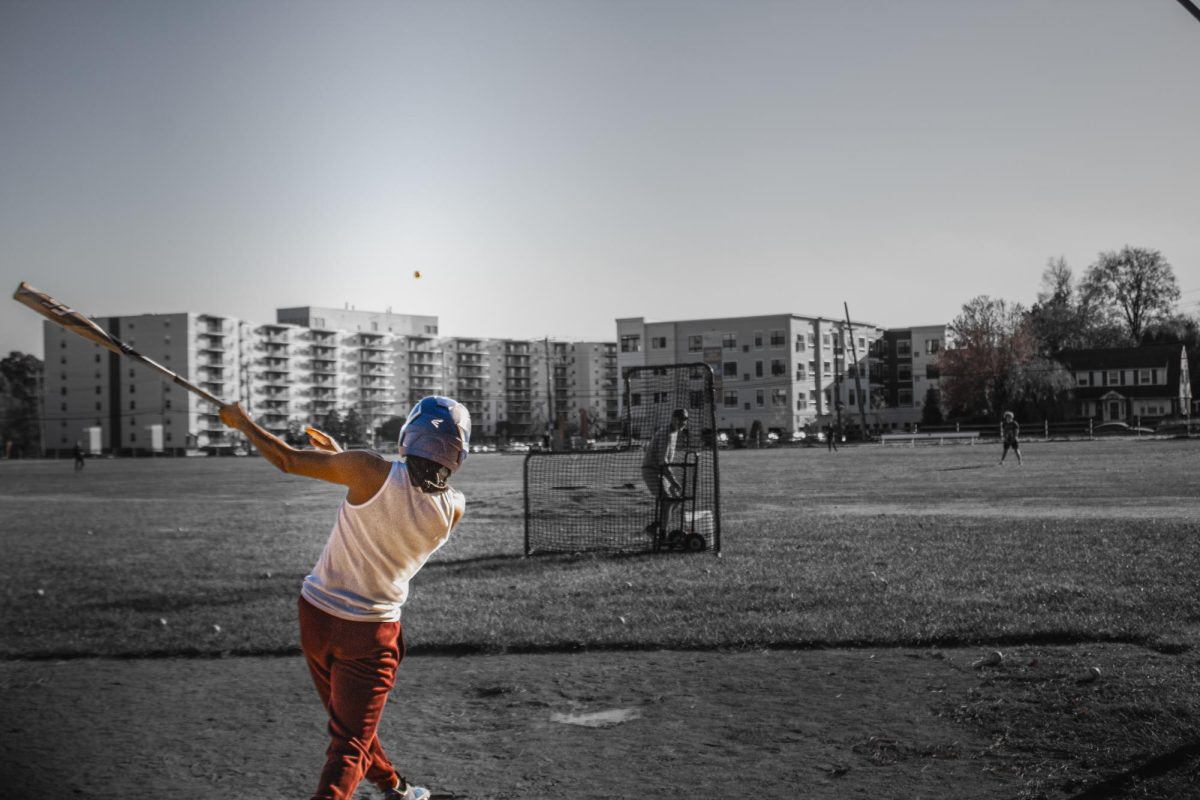
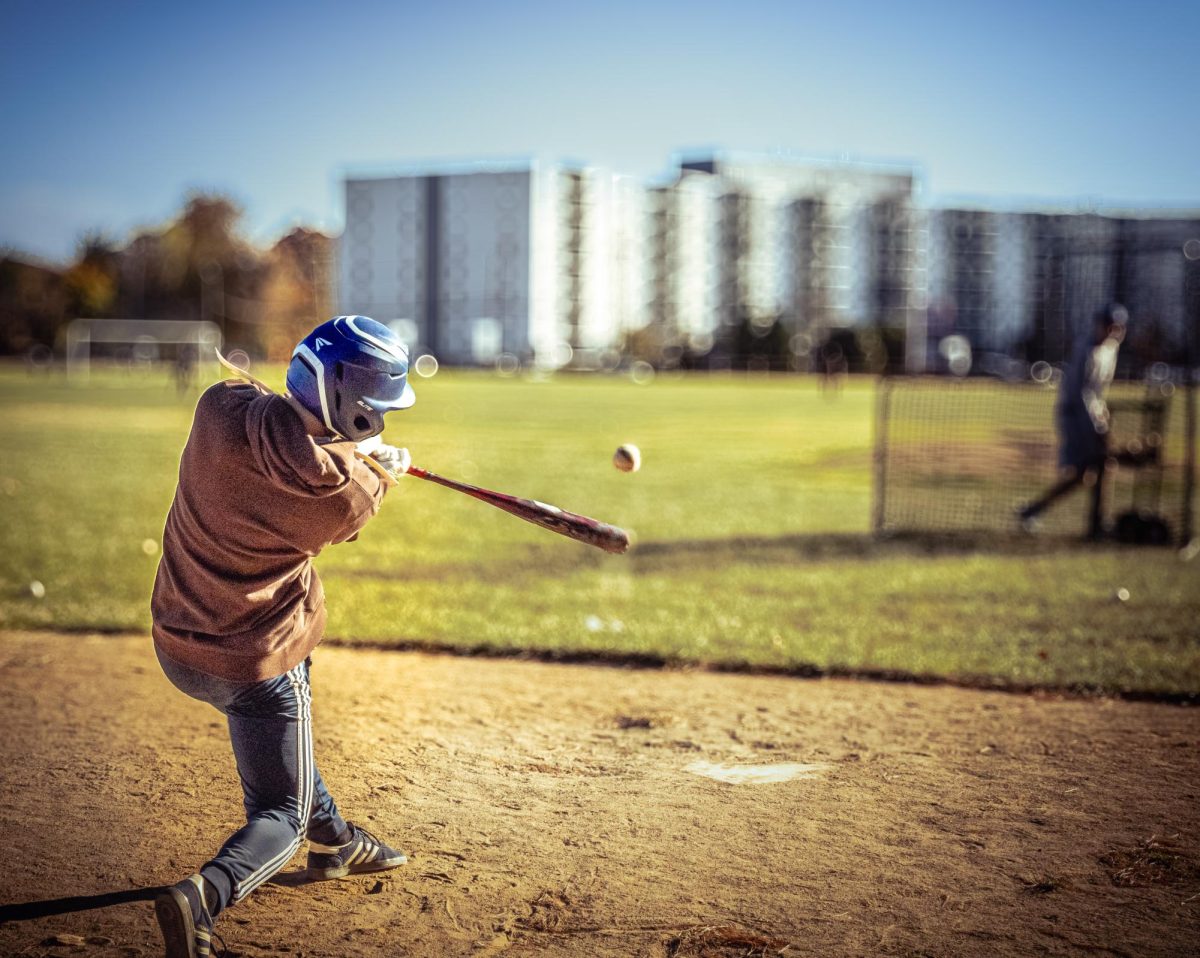


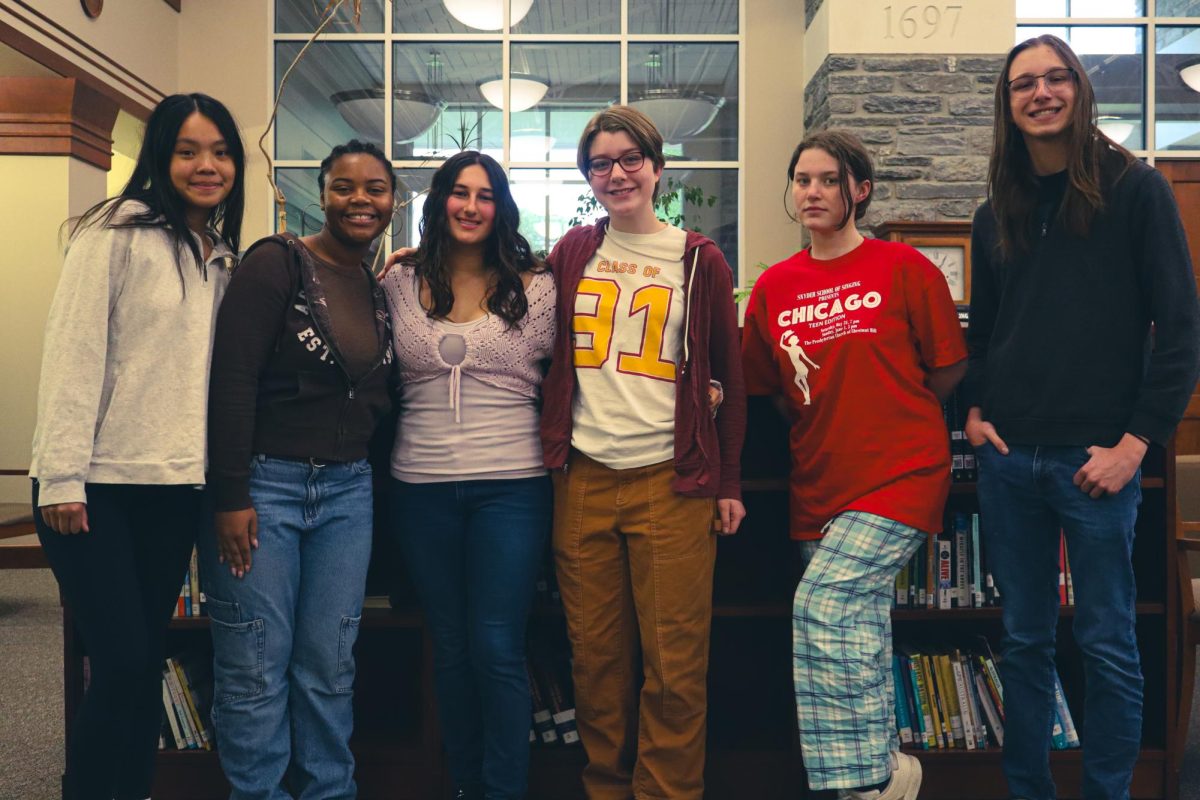
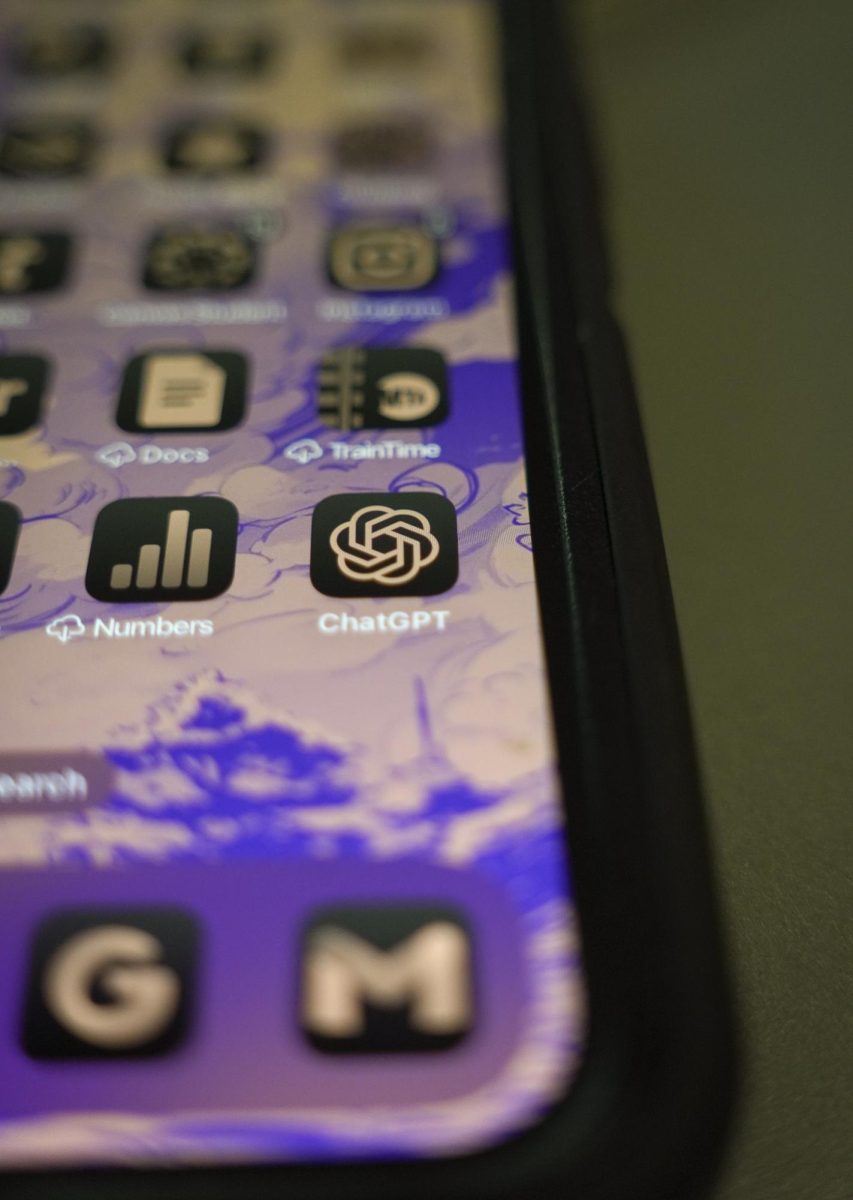


Nandi • Oct 14, 2025 at 8:58 pm
This article definitely made me more aware of how much hard work we should all put in. Although I think that tests should be mandatory for the college application process, there are so many reasons as to why they shouldn’t be. Students with lower incomes do not have luxurious resources like tutors, SAT prep courses and so many costly resources that can better test scores. Some students might be the smartest people in the world until they have to write an exam or simply have nerves on their test days. All in all, I feel sort of nervous but it is what it is I guess.
toby • Oct 14, 2025 at 12:38 pm
After reading this article, my anxiety about performing well in school for college has increased even more. Seeing how much of an increase in college expectations there has been so far, and the amount of time until I go to college, makes me even more nervous. I do agree with the ideas they share about how difficult it is to get into college now, with the rise of applications and the amount of fear surrounding it. I am anticipating going to college, and after seeing these statistics, I’m nervous, but I also feel some hope that more opportunities will pop up for me before my time for college comes.
Joseph • Oct 14, 2025 at 10:57 am
I enjoyed the article. One thing it made me think about is how fairness plays into the admissions race. You make a good point saying that increased number of applications and inflated test scores have raised the standards – and pressure – for all students. I would also say that this aspect negatively impacts students from less privileged backgrounds – applicants who are very smart and well-qualified in multiple ways but come from a lower socio-economic background may find themselves burdened by the costs of SAT tutoring and application coaching. That being said, colleges which inflate important statistics – such as median test scores – to make themselves look more desirable should give more consideration to how this actually impacts the students who want to apply.
jason • Oct 13, 2025 at 4:49 pm
I think this topic is very important because I am in my first year of hight school and I will have to do this soon and I think it will be very hard for me to het into a school I want to go to. I think it will be hard because I’m not good at all of the subjects in school and now that the collages are making it harder for all of us to get in to the school that we want.
I also think this will increase the amount of people that will not go to collage and just skip the whole process all together. I think that the standard is set to high or at least getting to that point as we get older especialy for people that are not the academic type of people.
Sammy • Oct 12, 2025 at 7:45 pm
I agree that colleges have become much more selective over the years, because of the data shared in the article as well as my prior knowledge. Based on the statistics in this article, it is clear that the number of applicants for many colleges has increased, while the number of accepted students has remained relatively the same or even decreased slightly. This obviously makes it more difficult to gain acceptance since applicants are competing against many more people. The statistics are also from a reputable source, the Common Application, which is very qualified to speak on admissions data since it is a platform for college applications, so I agree with this claim. In addition to reading this article, I have read or learned about admissions from a variety of other sources, and many have also expressed the idea that selectivity has increased. These sources have blamed a variety of factors like the ones explained in this article as well as others like globalization, which has lead to an increased number of foreign students applying to American colleges. So, my personal research on college admissions also makes me inclined to agree with this article’s claim.
Lauren M Washington • Oct 12, 2025 at 4:51 pm
Hi Ash, I really enjoyed reading your article. Great job articulating your opinion on such a complex topic. The statics and drawings were a great idea to help get your point across to the readers.
Oonagh • Oct 11, 2025 at 12:02 pm
I learned that there was a large spike in the number of applicants to colleges in recent years, which was really interesting to me and made me wonder why. I agree with the perspectives shared about the college process; that students are finding it increasingly more stressful and that it is becoming something completely different than what it was when our parents applied. As someone in the process currently, my feelings towards selectivity in colleges is that a more selective college is not necessarily a better college and that I believe a lot of students get caught up in trying to get into the most selective schools, which only leads to more unnecessary stress.
Nathaniel • Oct 10, 2025 at 6:43 pm
I agree that the inflation of test scores and rising application rates have made the college process much more difficult for students of our generation. However, I think that as the “best” schools are becoming increasingly selective, more college applicants are becoming aware that acceptance rates do not equate quality of education. As the article discussed, many schools such as Northeastern are artificially deflating their acceptance rates with the goal of appearing more prestigious. Just because they are denying more applicants does not mean their program is significantly better than it was 20 years ago when the acceptance rate was 70%. In my own college process, I am prioritizing academic fit, not selectively. While I am applying to a couple schools with low acceptance rates, the majority of my list is composed of schools that I have a reasonable chance of getting into and that I know will give me a great education. Because I know I will ultimately end up at a school I am happy with, I don’t feel overly stressed about the college process. I think a lot of college applicants could benefit from realizing that their ability to get into a hyper selective school will not ultimately make or break their future.
Alana S • Oct 10, 2025 at 9:33 am
I agree with this article. As I am in the college process, it feels nerve-racking because the pressure is immense to be the best. When you talked about social media’s impact, I felt completely seen. Seeing other people talk about their high school stats can make you feel like you are not doing enough, and can feel degrading to your own worth. It is sad how colleges define you as just a number: your GPA, grades, and standardized test scores. In addition, the amount of supplements that build up over time gets stressful and overwhelming while trying to balance it with schoolwork. Sometimes, it feels like I have no time to do anything, and supplements are very time-consuming, and you want to produce quality work.
Hunter • Oct 10, 2025 at 9:32 am
I agree that colleges receiving a great increase in applications and the need for many schools to have a selective image, disadvantages students in many ways. Specifically, the increase in selectivity in college applications disproportionately affects people with less financial resources, as many of the attributes needed for a better application are not always financially available to many people. For example, desired SAT and ACT scores are continuously getting higher as test-optional schools are only getting the highest SAT scores from their applicants. Because of this, many students need tutors and paid online resources in order to get their scores up. However, not everyone has the money to afford these resources and can be left with lower test scores. Similarly, certain families with the necessary means hire professionals to help write college applications. This once again puts people who cannot afford such luxuries at a disadvantage. In total, there are many ways in which the increasingly selective college process puts lower-income students at a disadvantage, and in order for this process to be fairer, the application process must change.
Anjali Holloman • Oct 10, 2025 at 9:28 am
It is interesting to see how quickly college admissions have evolved in the past 10, maybe even 5 years. The continuous increase in exclusivity makes me nervous for future applicants after me. If it is so hard to get into college now, I can’t imagine what it will be like in a couple years for others. I agree with Ash that colleges demanding so much from students (test scores, essays, and good academics) is the root of most high school seniors’ stress. It is almost unrealistic for colleges to expect a student to do every single thing. We are only teenagers. It is almost as if they want us to be robots, it is not human. As a fellow peer who is in the middle of the college process, the increase of selectivity scares me. Every application is a gamble on my future.
Neiko • Oct 10, 2025 at 9:27 am
Colleges should be making more room for new students with the amount of money they are getting. People pay up to more than $100k just to go to a standard 4-year college. What are they doing with this money that they can’t expand their campuses? If colleges are getting more than $50k from each student, where does the money go? Now, obviously, people take out student loans, which can take over 20 years to repay, but big colleges like UCLA are getting more than 100,000 applicants each year, and they can’t expand their campus? The rate of students’ mental health is going down because of the stress that goes into the college application process. Having to write multiple essays for multiple universities and doing standardized testing can take a toll on people. The only reason colleges’ acceptance rates are going down is because of the number of applicants they have, due to how low the acceptance rates are. So basically, it’s a loop; people are applying to more colleges because of the low acceptance rates, but the acceptance rates are going down because of the increase in people who are applying.
Harrison • Oct 10, 2025 at 9:25 am
College is unrightfully getting harder to be accepted to, the practice of universities like Northwestern should not be allowed. When learning about Northeastern’s tactics to lower their acceptance rate, I felt it was a misrepresentation of the university. This leaves qualified applicants to feel weary about applying, and in turn may cause them not to apply. Schools should not try to make their colleges harder to be accepted because then they are making the playing field less fair. If qualified applicants see that the acceptance rate is so low they may not want to apply because it costs money, leaving it to affect less wealthy applicants more than rich ones.
Kylie Firmin • Oct 10, 2025 at 9:21 am
Something I feel resonated with me from this article is that the college application process has become increasingly unrealistic and a higher reach for students, and is leading to a feeling of impossibility surrounding college. From my own experience, I can testify to the fact that compared to older friends and family members, my class’s application process seems to be vastly different. And it is not just because of chance. As the author highlighted, not only are colleges just getting more applications, but some are altering their statistics (whether it be purposeful or not). I feel that the prospect of college has become one that is tied closer and closer to elitism. It is not wrong to say that it feels like where you go determines your future. I think this is largely related to the competitive aspect that colleges are striving for, and it’s interesting to experience it firsthand, but also see the numbers that indicate the result of this push.
Malea • Oct 10, 2025 at 9:20 am
The college scene is getting more competitive just as much as it’s getting more unfair. I’ve been thinking more and more about college recently and it has been a stressful thing to think about. I constantly seem to be comparing myself to my peers who are taking more honors classes than I am and put myself down for not being in them. Being in high school during a time where the college acceptance scene is more competitive than ever feels like I should be constantly competing and doing the most to be the best. When having to talk about grades or classes or college with my peers, it immediately dampens my mood because it’s such a stressful topic for me. I don’t think colleges are being fair in their standards of students and what they expect them to do while they are in high school. As expectations increase, stress on high school students increases as well.
Serafina • Oct 10, 2025 at 9:19 am
I agree completely with everything presented in this article. College selectivity is actively making it more difficult for students from low-income families to get into these ‘top rated’ colleges. The college process nowadays is so expensive. Each application you submit costs money, especially if you don’t have a fee waiver, and as the article pointed out, the increased selectivity means that it’s imperative that students apply to numerous places. One way that students can get a better SAT or ACT score (that might be in line with the college’s average), is to take the test several times to SuperScore the best results together. But each test costs money to take. Many extracurricular activities cost money, time, and effort to pursue, and colleges boast that they want well-rounded students with good extracurriculars and good grades. Ultimately, college selectivity means that students need to be practically perfect with their grades, essays, and extracurriculars if they want even a chance of getting in, and that just isn’t feasible for everyone.
Henry Sylva • Oct 10, 2025 at 12:50 am
The college admissions process has become overly competitive, and it hurts student mental health far more than it helps their academic lives. As mentioned in the article, universities such as UCLA and Northeastern receive many applications, whereas they are keeping the same amount of enrolling students, which will drive acceptance rates to very low percentages. Test-optional policies, intended to create equity for students, either raised the stakes for students competing against averaged inflated numbers or worse, students took the tests knowing it was not going to benefit them. Colleges should be less worried about being selective and more focused on access and transparency. Students deserve an application process that is based on effort and potential, as opposed to a process that is like a lottery that hopes to create feelings of inferiority in students.
Gia • Oct 9, 2025 at 2:43 pm
I’ve learned that while the applications to colleges are going up, the acceptance rates are going down because the colleges are not opening up more spots for students. I agree that standardized test scores make the college admission scene harder to both get excited about, and finish effectively. As I’m thinking about college, even as a 9th grader, it makes me a little bit nervous, especially since some schools don’t seem very inclined to increase acceptance rates for the sake of making their colleges seem selective. I thank you for writing this as it was very insightful on what the current state of college acceptance is looking like.
Kemper Bramblett • Oct 7, 2025 at 2:18 pm
What did you learn from reading this article?
As someone who went into the college process relatively blind, I found the statistics in this article very interesting, in particular, I was astounded to learn about Northeastern’s fabricated selectivity. I myself fell for this, as I remember meeting a family friend who told me how she had attended Northeastern, and after a quick search on Scoir, I immediately assumed that they were exceptionally smart, and that they had gone to a very good school. I also liked how you touched on how most college’s new test-optional policy is artificially inflating their displayed average test scores, as this is something that I had thought about, but had heard little about it aside from college night.
Rainy • Oct 7, 2025 at 2:16 pm
The most striking piece of information I learned in this article was the story of Northeastern’s intentional decision to become incredibly selective. I had not expected university administrators to be that directly responsible for these changes.
I agree that the rising standards for college admissions are responsible for a huge amount of stress, felt both by me and my peers.
I think that selectivity can be valuable, but I find the trend of so many schools suddenly becoming extremely selective when they were not before concerning. As in the case of Northeastern, it seems that some of these colleges are lowering their acceptance rates more out of a desire for popularity and prestige than for any real reason.
Sam • Oct 7, 2025 at 2:12 pm
This definitely resonates for me. Recently I was at an open house at University of Maryland, big public university with close to a 50% acceptance rate. It shocked me to find out the average GPA for applying students was 4.4, and the average SAT was a high 1400 to a low 1500. These seem very inflated, due to the schools large student population and middle ground acceptance rate, but it seems to be a trend across almost every school. I also see parallels with the line about parents getting in with lower scores or grades. Someone in my family got into University of Rochester with a sub 1100 SAT score, well below average even for then. The average now for U of R is a 1470.
Ella • Oct 7, 2025 at 7:55 am
As someone who is also a senior and is struggling their way through the college process, I was already aware of most of the information in the article from my own knowledge. But it was still a great read, because I do strongly agree with Ash’s point of view on the college process. As someone currently applying to college, I share Ash’s frustrations with the unattainable standards colleges set for their applicants. Colleges’ hyper-selectivity can be extremely discouraging for applicants; students are forced to compare themselves to unrealistic, inflated standards that are largely the result of unfortunate worldwide circumstances, including COVID. But I do hope that they begin to level back out in the near future, to give more hope to future applicants.
Dillan • Oct 7, 2025 at 7:49 am
I agree with the author that the college process is significantly more competitive and stressful today than it has ever been. As a junior, I have not yet started applying to colleges, but I have researched and toured schools I am interested in. I have been taken aback by the resumes boasted by many high school students I toured with, as well as the college students giving the tours. Also, in my research, I found many colleges to have staggeringly high median SAT scores and worryingly low acceptance rates. This article provided statistics reflecting these feelings. As colleges become more selective, I think it is important to remember that a student’s standardized test scores and grades do not define them as a whole, and that taking care of one’s mental health is always important.
Henry Goldstein • Oct 7, 2025 at 7:47 am
Like all students, I have been well aware of the declining acceptance rates for college admissions. However, I am supposed to learn that universities like Northeastern have taken action deliberately to make their admissions more selective, and how successful it has been. It is crazy to me that in less than 25 years, their acceptance rate has declined by 65%. Although I believe students at AFS are capable of receiving a good education to help them get into more selective schools, this trend makes me concerned. I think that as this trend continues, selective colleges will end up being for students who are at the very top fraction of a percent academically, and many students who have enormous potential will have to go elsewhere. I think that the high levels of stress students experience will also help the trend continue, as they will feel the need to apply to more and more schools just to make sure they get into one.
Una • Oct 7, 2025 at 7:47 am
I’ve thought a lot about this recently. In a way, applying to college no longer seems like a measure of one’s accumulated knowledge and GPA and all the other things; it now feels like a lottery. Applying to 8 or 9 schools minimum, just to have a shot at getting in somewhere, regardless of extracurriculars or academic standing, no longer feels like an exciting reward after years of hard work; it feels like a game. I think that the point you are making could be a really beneficial explanation at 11th-grade college night, that students shouldn’t become overly stressed about acceptance rates, because in the time since our parents were applying to college, the entire landscape has basically flipped upside down.
Paige • Oct 7, 2025 at 7:46 am
As college application deadlines grow closer, students realize that being interested in the school and applying, is not good enough. Students have to go above and beyond, and even then it won’t change their outcomes. I learned that I could resonate with what was being said, talking to my parents about college but getting a completely different perspective on it, considering it was a different time. It brings up a question for me, why has school become so extremely selective? I do agree especially with the mention of the optional playing a major role in how schools show their acceptance rates, and how they change them. As someone who is in the middle of applying to colleges, I’ve grown to understand that the acceptance rate of a school does not sway me from trying anyway.
[email protected] • Oct 7, 2025 at 7:43 am
I absolutely have seen the trend explained in the article play out more and more over the last two years. Like a lot of people going through the college process now, I am supported by my parents, who applied to college over thirty years ago. The college landscape has changed so much in that time that it is extremely hard to try to explain to the adults in my life what applying to college is like right now and what realistic expectations are. The statistics presented in this article, especially the one about UCLA, proves this point. Many colleges have a plethora of applicants, but they don’t accept any more. That makes this really difficult. Awesome article!
Nika • Oct 7, 2025 at 7:39 am
Thank you for writing this article Ash. I found the data very interesting and could personally resonate with some of the things you mentioned about the stresses of applying to college. It’s important to remember to put things into perspective in order for students and parents to alleviate some of the stress. For example, you mentioned that parents may recall applying to a handful of schools and getting into all of them. The reality for most students is that they will get into at least a handful of schools as well. Additionally, the marketing for Northeastern suggests that it may be easier to get into the college than it seems. While it is true that it’s going to get harder to get into college no matter what, we need to understand that a large reason for that is simply because the applicant pool is so much larger now, and it is not a measurement of your value as a student or person.
Radha Airan-Javia • Oct 7, 2025 at 7:37 am
I agree that colleges are requiring more and more of their applicants for the chance to get accepted. I think another reason for this increased competitiveness could be the increased grade and extracurricular expectations for students. Academic excellence expectations have unsurprisingly risen with the difficulty of college applications. In addition, students are expected to complete a myriad of extracurricular activities, from varsity sports to running a club (and don’t forget about service hours). I would argue that these rising expectations are an indicator of a vicious cycle of expected excellence. With so many applicants, the top-scoring and academically excellent students are prioritized, setting a precedent of perfection for students to come.
Liam • Oct 7, 2025 at 7:36 am
As I’ve gone through the college process, I’ve found myself thinking what’s only supported by this article: colleges are getting more and more selective, it’s getting tough to keep up, and it’s sometimes hard for some people to wrap their heads around that fact. I remember when I was talking about the college process with my parents, they seemed to be assuming that I would be applying to around four schools. I approached the process, however, thinking that four schools was an absurdly small amount to be applying to. I was, in fact, looking at applying to around six schools, which some people in this school might even see as far too few. My point is, colleges are (as this article said) getting more and more selective, and nobody’s really on the same page in regards to what that means for applicants.